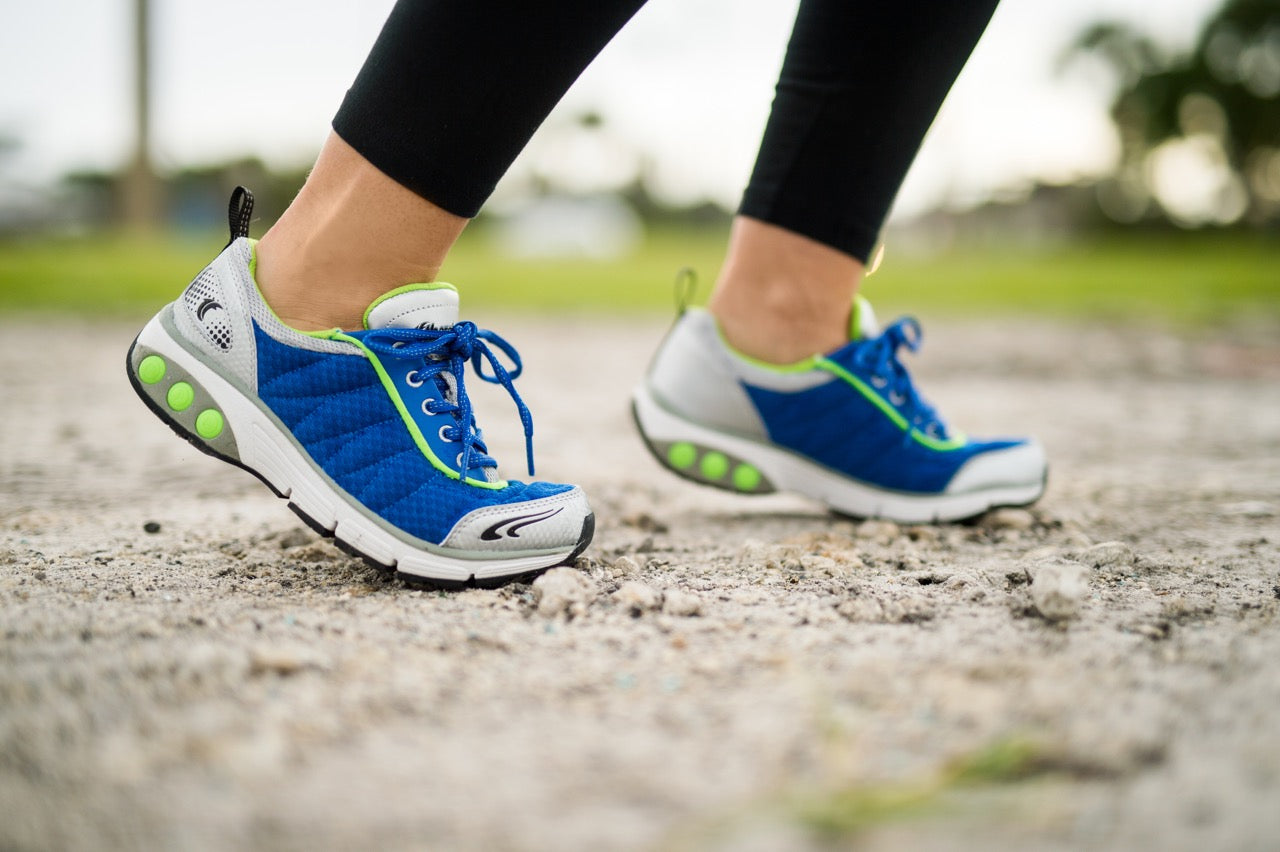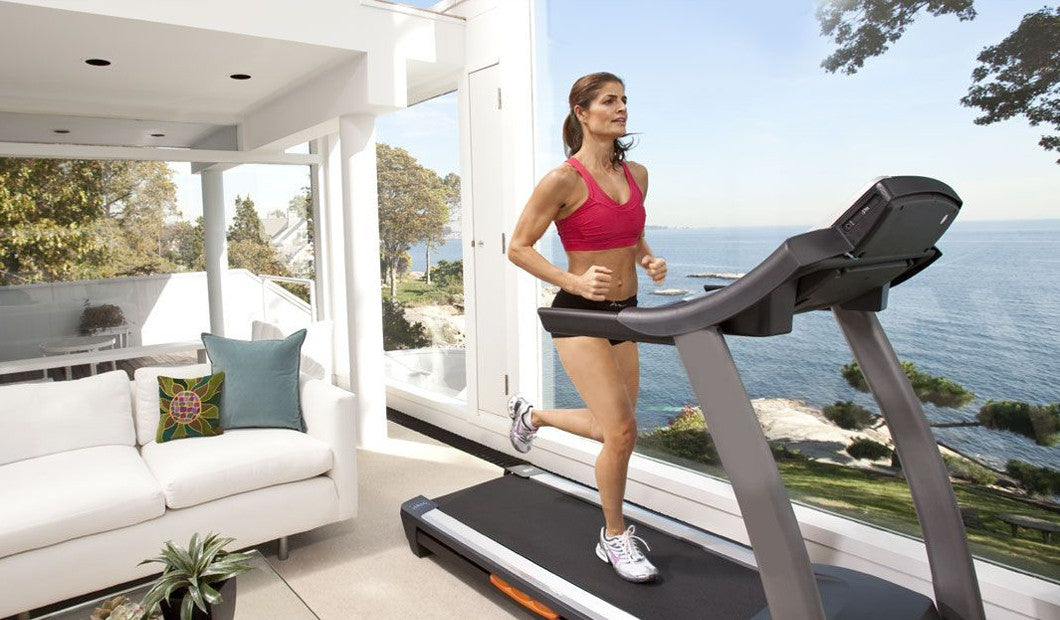Can Walking Really Get You to Your (Fitness) Destination?

Long time fitness experts, Kymberly and Alexandra, have taught on land, sea, and airwaves for 3 decades on 4 continents. From writing to speaking, emceeing to hosting a radio show, reviewing products to teaching classes, they truly believe that little steps turn into big paths. Move a little more than the day before. They run the blog, Fun and Fit - Healthy Aging for Boom Chika Boomers ;)
Below, they give us their tips on how walking can talk you hiiiiigher (and farther) - take those Therafits out for a ride!
I Would Walk 500 Miles (and I would walk 500 more!)
But would you walk 10,000 steps?
By now you probably have heard the advice to walk at least 10,000 steps per day. I am on that mission now and, boy, it’s hard to get in all those steps day in and day out. Some days I am convinced the battery in my pedometer gave up the ghost. And that is after teaching a group fitness class and climbing the stairs to our new home several times.Kymberly's pedometer
What Will Walking Do For You?
Then I take my dog on her walk and still wonder — what will all this walking do for me? Is it sufficient to help me lose some of the menopause weight I put on? Or to keep my health at its excellent level? Do I need to walk faster, up and down hills to burn maximum calories? (For more on the relevance of high intensity interval exercise for people over 40, read this well-done post by our friend and colleague, Tamara Grand). Is a non-sweaty, beautiful, flat, beach mosey just as good? Will walking meet other fitness or emotional goals as well?
So I kicked into my fitness professional mode and did some digging through publications and research. Walking is still the number one most accessible, successful, popular way to exercise and stay active. Whether you choose to walk indoors on cardio equipment or at a mall, or outdoors on trails or through your neighborhood, the first and most critical key is to log steps. One foot in front of the other. 9,998, 9,999, 10,000!
Walk for Healtht step, (ha ha) is to prioritize your goals. That will determine the intensity your walk will take. Are you walking for health and longevity? To improve your mood and mental hardiness? Then getting in those 10,000 steps per day is the best advice. No need to worry about intensity, duration, style. In fact, any more walking than you are doing now will improve your health. Trading tv commercial time on the LazyBoy for marching in place until your show comes back on is a body and brain booster.
Walk to Keep Weight Off
What if weight maintenance is your goal? For once, research offers more info for women than men when it comes to specific suggestions on how much to walk for weight control. Turns out your age and gender affect the answer. (Just last week I told my group fitness class that the 10k minimum applied to all ages as far as I knew. Turns out I needed to know more. And now you know too!)
For women, recommended steps per day to stave off weight gain is broken down by age:
18-40 12 000 steps per day (that’s what young pups get!)
40-50 11,000
50-60 10,000
60+- 8,000
For men, it’s a little more generalized:
18-50 12,000
50+ 11,000
My professional opinion is that we need to move just as much, if not more as we age. (See our post Be Inspired to Age Actively). For our readers 60 years and up, why stop at 8,000 steps? Keep trying for 10k. You’ll get to more fun places!
Walk to Lose Weight
What if your goal is weight loss? Now we need to talk about intensity and getting the most out of your perambulations!
First a Fun Fit Fact: (courtesy of Len Kravitz. PhD et al in “Walking Extravaganza,” IDEA Fitness Journal Oct 2013 pgs 40-47) Did you know your body has a natural or default walking speed that seems to be set to use fat as the optimal fuel source? Apparently our bodies naturally select a 2.8 mph walking pace as the most economical one. “Economical” in this case means expending the LEAST energy to sustain the activity. Not the pace for losing weight and burning max cals, but a great pace to using fat as fuel (vs carbos) and to stay motivated to keep moving moderately.
Moderate vs Brisk Intensity
What does “moderate” intensity mean though? If you walk about 100 steps per minute then you are cruising along at a moderate pace. Another way to calculate moderate intensity is to complete 3000 steps in 30 minutes. Interestingly enough — especially for those of you who prefer the elliptical machine, a pace as low as 1.7 mph with inclines of 6-9% still stimulates weight management (not LOSS, mind you).
However, we are talking about kicking it up yet another notch to use walking as a weight loss means. We’re now into the “brisk” walk category. That 2.8 mph has to shift into calorie overdrive to 3.5 mph. Zoom zoom! Yes, walk faster! Go uphills. HIt the incline button. Breathe and sweat with no breaks for instagramming selfies. (That was for my sister, the ultimate selfie picture taker who is famously quoted as saying she does not want to actually sweat when walking.)
If you are tempted to add ankle or hand weights in order to increase intensity — uh unh, no, stop right there. Listen to the experts:
NOT Recommended for Walkers
Carrying hand weights;
Wearing ankle weights.
Either may result in injury or repetitive stress syndrome. Nor do those added weights increase energy expenditure. Walkers tend to slow down just enough to account for the weights at the end of those limbs. Yes, risk goes up, benefits do not.
Recommended for Walkers
If you must strap on added weight, wear a weighted vest to increase energy expenditure. The external weight is distributed more evenly and is close to your core so not putting mechanical stress on your joints;
Accumulate 30-60 minutes a day of moderate intensity exercise at least 5 days per week OR:
Get in 20-60 minutes per day of vigorous intensity activity at least 3 days per week. These guidelines come from the American College of Sports Medicine (ACSM).
Another Fun Fit Fact
A pedometer study of an Old Order Amish community showed that the men averaged 18,000 steps per day and have an obesity rate of ZERO!! percent. Yes, 0%; The Amish women in this group averaged 14,000 steps per day with an obesity rate of just 4%.
So there you have it - everything (and more) you ever wanted to know about walking. So how about lacing up those Therafits and taking them for a spin down the block, up the mountain, or through the woods! :)
Make Your Whole Body Happy and walk your walk - be sure to check out Alexandra and Kimberely at Fun and Fit and read up on all their super fabulous fitness adventures!



